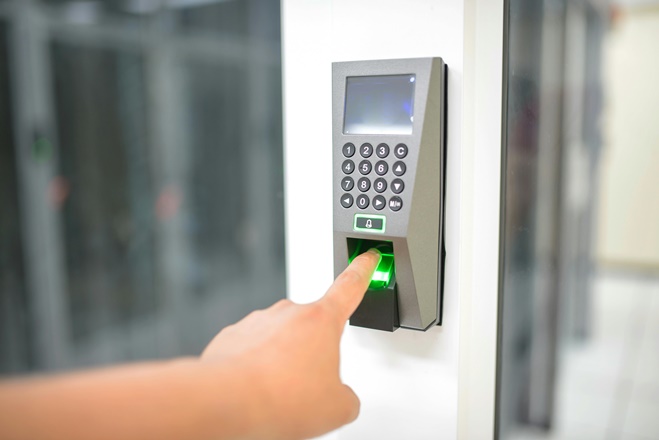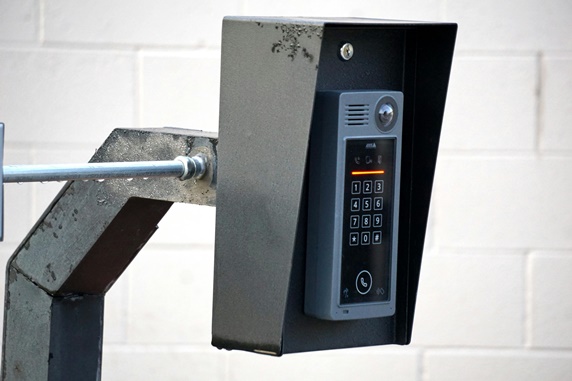The Uses, Pros, and Cons of Electronic Access Control System for Business and Residential Security
In the evolving world of property security, electronic access control systems (EACs) have emerged as a powerful alternative to traditional lock-and-key setups. Whether you manage a business or oversee a residential complex, understanding how EAC systems work—and their many advantages—can help you make informed decisions about your security needs.
What are Electronic Access Control Systems?
An electronic access control system is a modern security solution designed to manage who can enter or exit specific areas within a building. Instead of relying on traditional physical keys, EAC systems use electronic credentials, such as key cards, fobs, personal identification numbers (PINs), biometric data (like fingerprints or facial recognition), or even smartphones. These credentials allow authorized individuals to gain access to the building using the EAC system while reducing the risk of lost or stolen keys and unauthorized access.
Along with the electronic credentials, the system relies on several key components that work together seamlessly. Credential readers are devices installed at entry points—such as doors or gates—that scan and verify the credentials presented by users. The readers then send the information to access control panels and servers, which act as the “brains” of the system. They process information from the readers, determine whether access should be granted or denied based on predefined rules, and keep detailed logs of all activity for security and compliance purposes.
When a user approaches an entry point and presents their credential, the system quickly authenticates their identity and checks their authorization level. Within just a few seconds, it makes a real-time decision to either grant or deny access, ensuring both security and convenience for everyone involved.
Common Uses of Electronic Access Control Systems
Business Applications
Electronic access control (EAC) systems are a popular choice across a variety of business settings, such as corporate offices, government buildings, healthcare facilities, and educational institutions, as well as high-security zones. These systems are particularly effective for managing employee access, securing sensitive areas, and regulating temporary entry for visitors and contractors. EAC solutions optimize access control to help organizations maintain security while supporting smooth business operations.
Residential Applications
In residential settings, EAC systems are becoming increasingly popular, especially in apartment complexes, gated communities, and even single-family homes. The integration of EAC technology with smart home systems offers homeowners the added convenience of remote management and monitoring. This not only enhances security but also provides peace of mind, allowing residents to easily control access to their property from anywhere.
Key Features of Modern EAC Systems
Modern electronic access control systems offer a range of powerful features designed to enhance security and streamline management. One key feature is time and role-based access. This enables administrators to define permissions based on user roles or specific schedules, ensuring only authorized personnel enter designated areas at precise times, minimizing security risks and maintaining operational order.
Remote management is another key feature, allowing administrators to grant, revoke, or modify access permissions from any location. This flexibility is particularly beneficial for organizations with multiple properties, enabling them to respond quickly and proactively to evolving security needs.
Real-time monitoring is a benefit of modern EAC systems. Instant alerts and ongoing tracking of entry and exit events provide administrators with up-to-the-minute information about facility activity. This immediate insight helps organizations maintain a secure environment and respond promptly to any unusual incidents.
For added security and compliance, EAC systems maintain detailed audit trails and access history logs. These records document every access event, which supports thorough security investigations and helps organizations meet regulatory requirements.
EAC systems also seamlessly integrate with other security measures. By working in conjunction with alarms, cameras, and fire safety systems, EAC creates a comprehensive security network that effectively protects both individuals and assets.
Advantages of Electronic Access Control Systems
Enhanced Security: EACs restrict access to authorized users, eliminating risks associated with lost or duplicated keys. Features such as encryption and multi-factor authentication further strengthen security.
Flexible Access Management: Easily add, revoke, or modify permissions without rekeying locks, saving time and money.
Convenience: Keyless entry and remote management streamline daily operations and visitor management.
Accountability: Automatic logs and audit trails provide transparency and support compliance efforts.
Scalability: EAC systems can grow with your property, from a single door to multiple buildings or sites.
Cost Efficiency Over Time: Although the initial investment may be higher, EACs reduce ongoing expenses associated with lost keys, lock changes, and manual oversight.
Potential Drawbacks and Limitations
Higher Initial Investment: EAC systems can be more expensive to install compared to traditional locks.
Technical Setup and Maintenance: Professional installation and ongoing maintenance are required to ensure reliability.
System Vulnerabilities: Like any technology, EACs can be vulnerable to hacking or power outages if not properly managed. Regular updates and cybersecurity measures are essential.
User Adaptation: Staff or residents may require training to use the system effectively.
Conclusion
Electronic access control systems offer a modern, flexible, and highly secure approach to managing property access for both businesses and residences. With features like remote management, detailed audit trails, and seamless integration with other security systems, EACs deliver unmatched convenience and peace of mind. By understanding the pros and cons, you can determine if an EAC system is the right fit for your security needs and enjoy the benefits of smarter, safer property management.


